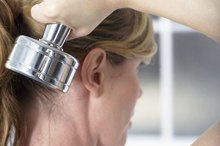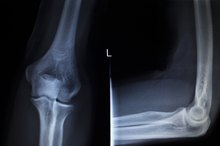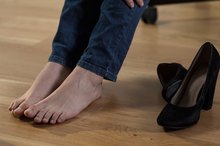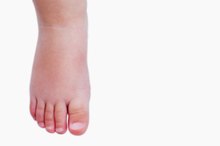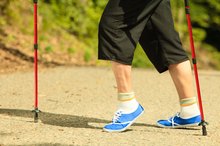Exercise and Nerve Damage Symptoms
Nerve damage symptoms don't need to stop you from exercising, but they do pose some limitations on which exercises you can, and should, do. Nerve damage symptoms can include muscle weakness, pain, numbness and tingling. Nerve damage can also inhibit your proprioception, or ability to sense position, and therefore you can more easily injure yourself exercising without realizing it. The right kinds of exercise, however, coupled with careful attention to your body as you perform them, can help reduce nerve damage symptoms, in part by slowing down the process of damage and helping prevent cramps, wasting and paralysis. See your doctor before starting a new exercise regimen.
Beneficial Exercises
Low-impact exercises such as swimming, bicycling and rowing can help reduce nerve damage symptoms without risking further damage. For additional strength training, consider seated exercises and resistance training exercises for parts of the body not affected by nerve damage. Stretching and toning exercises help improve circulation and restore and retain range of motion. Balance exercises are helpful in preventing falls.
- Low-impact exercises such as swimming, bicycling and rowing can help reduce nerve damage symptoms without risking further damage.
- For additional strength training, consider seated exercises and resistance training exercises for parts of the body not affected by nerve damage.
Exercises To Avoid
Exercise Programs for Peripheral Neuropathy
Learn More
People with nerve damage to the feet should avoid weight-bearing exercises such as walking or running as they could cause foot injuries. Those with nerve damage to the heart and blood vessels, or autonomic neuropathy, are at greater risk of heart attack from strenuous exercise and therefore more limited in the range of exercises they can safely perform. Regardless of the parts of your body affected by nerve damage, you should always discuss with your doctor any exercises you are considering before taking them on.
Foot Considerations
With nerve damage to the feet, never exercise barefoot. Instead use quality walking or running shoes with socks that aren't too thick or tight, preferably ones that wick moisture. Check shoes for tears and punctures as well as rocks or other debris before putting them on. After your workout, check your feet for cuts, blisters, redness or swelling.
- With nerve damage to the feet, never exercise barefoot.
- After your workout, check your feet for cuts, blisters, redness or swelling.
General Considerations
Exercise for 66-Year-Olds
Learn More
People with nerve damage should always take care to include gentle exercises in their routine for warming up before exercise and cooling down afterward in order to ease their heart gradually in and out of the routine and avoid overexerting any muscles. Self-massage is another effective way to gently encourage circulation and muscle flexibility.
Related Articles
References
- Cochrane Reviews: Exercise For People With Peripheral Neuropathy; C.M. White, et al.; Oct. 2004
- The Body: Managing Peripheral Neuropathy; Sam Page; 2009
- Melbye M. An adherent nerve root--classification and exercise therapy in a patient diagnosed with lumbar disc prolapse. Man Ther. 2010;15(1):126-9. doi:10.1016/j.math.2009.04.010
- Su Y, Lim EC. Does evidence support the use of neural tissue management to reduce pain and disability in nerve-related chronic musculoskeletal pain?: A systematic review with meta-analysis. Clin J Pain. 2016;32(11):991-1004. doi:10.1097/AJP.0000000000000340
- American Academy of Orthopaedic Surgeons. Therapeutic exercise program for carpal tunnel syndrome. Updated October, 2018.
Writer Bio
Based in Maine, Sage Kalmus has written extensively on fitness, nutrition, alternative health, self-improvement and green living for various websites. He also authored the metaphysical fiction book, "Free Will Flux." Kalmus holds a Bachelor of Science from Boston University's College of Communication and is a Certified Holistic Health Counselor with special training in Touch-For-Health Kinesiology.



